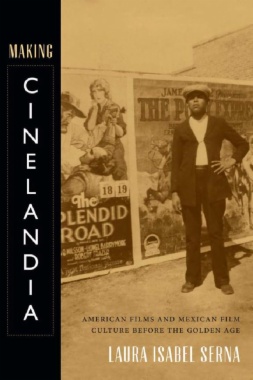In the 1920s, as American films came to dominate Mexico's cinemas, many of its cultural and political elites feared that this "Yanqui invasion" would turn Mexico into a cultural vassal of the United States. In Making Cinelandia, Laura Isabel Serna contends that Hollywood films were not simply tools of cultural imperialism. Instead, they offered Mexicans on both sides of the border an imaginative and crucial means of participating in global modernity, even as these films and their producers and distributors frequently displayed anti-Mexican bias. Before the Golden Age of Mexican cinema, Mexican audiences used their encounters with American films to construct a national film culture. Drawing on extensive archival research, Serna explores the popular experience of cinemagoing from the perspective of exhibitors, cinema workers, journalists, censors, and fans, showing how Mexican audiences actively engaged with American films to identify more deeply with Mexico.
- Table of Contents
- Acknowledgments
- Prologue
- Part I. Appearing: On the Aesthetic Foundations of Social Life
- 1. Life as a Spectacle: Self-Display, Reflexivity, and Artifice
- 2. Masks and Clothes: Medial Surfaces and the Dialectic of Appearing
- 3. Aesthetic Mediation: A Theory of Representations
- 4. Figures: Social Images
- 5. Out of Control: The Alienated Image
- Part II. Vanity and Lies: On the Hostility Toward Appearances
- 6. “Vanity Fair”: The Frivolity of Worldliness
- 7. Against the Mask: The Rise of Social Romanticism
- 8. Against the Spectacle: The Crusade of Romantic Anticapitalism
- 9. Against Aesthetic Values: Aestheticism, Aestheticization, and Staging
- 10. Two Baptisms and a Divorce: Homo Economicus Versus Homo Aestheticus
- Part III. Toward a Social Aesthetics: On the Sensible Logic of Society
- 11. The Opening: Aesthetic Foundations of the Common World
- 12. Aisthesis: Senses and Social Sensibility
- 13. Social Taste and the Will to Please
- 14. Aesthetic Labor and Social Design: The Value of Appearances
- 15. Prestige and Other Magic Spells
- Conclusion: Social Immaterialism or the Philosophy of Andy Warhol
- Afterword
- Appendix: Illustrations Mentioned in the Text
- Notes
- Index

